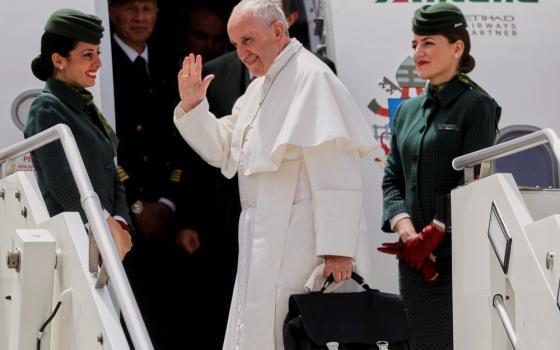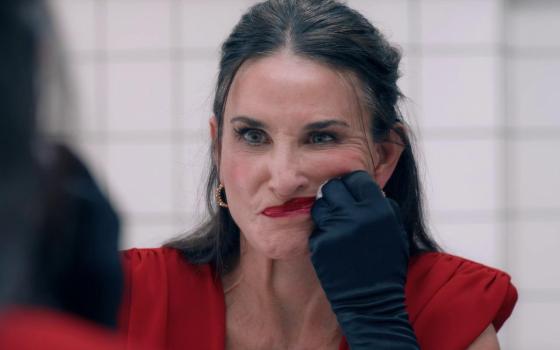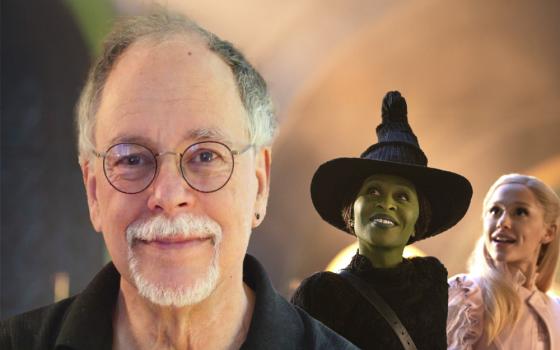
A scene from the DreamWorks animated movie "The Wild Robot" (NBCUniversal)
Humans place a lot of stock in overcoming nature.
It's the core of our identity: We rose above the daily scramble for survival, formed society, created art and leisure and religion. By contrast, the animal world that we left behind is harsh and brutal. You're either eating or being eaten, and survival is the only law: "red in tooth and claw," as Tennyson wrote.
Of course, "harsh" and "brutal" are human value judgments. The cycle of life and death is just part of how nature works. Dismissing the natural world as savage also ignores its essential mutuality. Life is a circle, as a certain famous animated movie reminds us. Predator and prey and scavenger and parasite all play a role in nourishing and sustaining the larger ecosystem.
For all of our pride at overcoming our animal past, maybe that world still has something to teach us.
That is the premise of "The Wild Robot," a new film from DreamWorks Animation, written and directed by Chris Sanders and based on the book series by Peter Brown.
The film takes place in a not-too-distant future following an environmental catastrophe. We see empty cities half-submerged in the sea, and humanity exists in climate-controlled enclaves, their needs attended to by automated servants.
One of them, a helper robot named Roz (voiced by Lupita Nyong'o), finds herself stranded on an island following a shipping accident. The only other inhabitants are animals, and although she learns to communicate with them, she has no place there — concierge services don't factor into the law of the jungle. As Fink, a sardonic fox (Pedro Pascal), tells her: "Kindness is not a survival skill."
Advertisement
But when Roz becomes a surrogate mother to an orphaned goose, Brightbill (Kit Connor), she finds a new purpose. Winter is coming, and if Brightbill wants to survive, he needs to learn to swim and fly. Roz enlists Fink to teach her the ways of the wild, and the three form an unlikely family of outcasts.
The film is gorgeously animated, applying a painterly style to 3D figures. It looks more like a picture book than the photorealistic animation that preoccupies Pixar, and is all the better for it. This is a fable, not a documentary.
Celebrity voice-acting can be hit or miss, but the cast of "The Wild Robot" is strong throughout — notably Nyong'o, Pascal and Stephanie Hsu, who gives voice to a pleasantly menacing robot who comes to retrieve Roz.
The first two acts, which deal with Roz's adjustment to island life and parenting, resonate more than the third, when the action ramps up and it starts to feel more familiar.
But there's also a thematic maturity and frankness about the natural world that is reminiscent of the films of Hayao Miyazaki (the lush, near-mystical forest in "The Wild Robot" calls to mind "Princess Mononoke," although "The Wild Robot" is a much gentler film). Kids will appreciate its heart and humor, but perhaps they'll also learn something about the natural world, and the importance of all things existing in balance.

The official poster for "The Wild Robot" (OSV News/Dreamworks)
On the topic of balance, while Roz learns much from her animal neighbors, we also discover that she has something to teach them. When a lethal blizzard descends on the island, Roz makes a tremendous sacrifice to get the animal population to shelter. She gathers natural enemies — predators and prey — and asks them to work together so that they can all survive. It goes against their nature, but as Roz says, "Sometimes to survive, we must become more than we were programmed to be."
This suggests that the "civilized" world does have something worth sharing: the value of solidarity. "The Wild Robot" rejects a hierarchical view of creation, instead embracing the vision shared by St. Francis of Assisi (and his namesake, Pope Francis) — a kinship among all living things.
You may have noticed that I haven't mentioned any human characters. Humans do appear, although — if I recall correctly — none of them have speaking roles.
This is one of the boldest creative choices of "The Wild Robot": It's the nonhuman world that grows in solidarity and mutual concern, while humanity remains obliviously tucked away in their planned habitats. I took this as a note of hope, but also a warning — life will go on even in the face of environmental catastrophe, but there's no guarantee that the human race will be part of it.
Our time to learn these lessons is now, while a better future is still possible.
Maybe "The Wild Robot" will help to plant those seeds. At the very least, families might find it an entertaining entryway to conversations about mutuality and solidarity with the environment.
No matter what world we come from, "The Wild Robot" reminds us that the only way we can survive is together.








